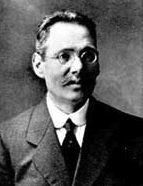

David Lopes’ care in interpreting al-Nahrawâlî was not followed by a French author, Gabriel Ferrand, who published the book Instructions nautiques et routiers arabes et portugais des XVe et XVIe siècles, in three volumes (1921-1923, 1925 and 1928), the first two being an anastatic reproduction of some of Ibn Mâjid’s texts. In the preface to the first volume, the author revealed his intention: “to identify the Ibn Mâjid of our texts with the Arab pilot who led Vasco da Gama’s Portuguese fleet from Malindi to Calicut in 1498. The Arab mu’allim is thus closely associated with one of the most important events in the history of recent centuries” (Ferrand, Instructions nautiques..., 1921-23, p. II). The French author’s enthusiasm for this supposed identification prevented him from noticing that on the following page he had written something that would force him to reflect on the itineraries of Ibn Mâjid, which were almost all prior to Vasco da Gama’s voyage. Ferrand states: “These Arabic nautical instructions thus make an infinitely valuable contribution to the history of navigation and trade in the South Seas prior to the arrival of Vasco da Gama” (Ibid., p. III).
Ibn Mâjid was born around 1421 and died in 1500. Known as “the lion of the seas”, he was from Julfar, a port in the Persian Gulf, in the emirate of Ra’s al-Khayma, and his scripts were written in the 15th century. Gabriel Ferrand’s identification had a huge impact on historical research and led to a careful study that proved the value of the Arab pilot’s itineraries and the influence they had on navigation in the Indian Ocean and adjacent seas. However, it seems certain that it was not Ibn Mâjid who took the Portuguese sailors to India, but rather a pilot accustomed to sailing to the west coast of India and a native of that region, as Fernão Lopes de Castanheda and João de Barros mention.
This work is financed by national funds through FCT - Foundation for Science and Technology, I.P, in the scope of the projects UIDB/04311/2020 and UIDP/04311/2020.
